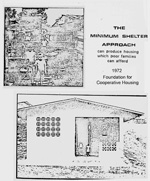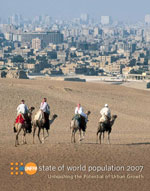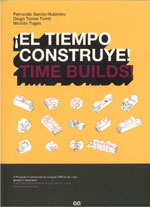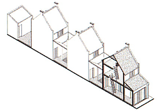 THE MINIMUM SHELTER APPROACH CAN PRODUCE HOUSING WHICH THE POOR CAN AFFORD. FCH International, Inc. 1972. A subsidiary of the Foundation for Cooperative Housing (now called the CHF – Cooperative Housing Foundation).
THE MINIMUM SHELTER APPROACH CAN PRODUCE HOUSING WHICH THE POOR CAN AFFORD. FCH International, Inc. 1972. A subsidiary of the Foundation for Cooperative Housing (now called the CHF – Cooperative Housing Foundation).
An early report prepared for USAID, which proposes a "minimum shelter" form of housing. “This can be .. provided in many ways. One is a "shell” house consisting of only a roof and a floor; another is a "core" house, which is an enclosed structure that includes basic fixtures. It can be completed and expanded by the occupant himself as his income permits. Another alternative for a very poor family isthe "site and service” approach. Here the bare plot and minimum services, such as water and waste disposal, are provided and the resident develops the type of shelter he can afford himself.
There are two elements that set the "minimum shelter” model apart from other models. It provides a unit that is designated to match the ability to pay. In the traditional approach to housing planners have designed a house and then estimated how many people could afford it. The minimum shelter approach works differently. Here, an architect begins with the fact that a family perhaps could afford six to ten dollars a month for shelter; he is then faced with designing a housing solution that will be possible within that monthly payment constraint.
The second way that this model differs from the traditional is that it provides a range of shelter solutions that can be produced by the occupant himself, , with a minimum of outside help, once the framework has been established. Thus, occupants can build up an equity of independence and freedom from constant government assistance. The minimum shelter approach has already been tested with [US]AID and FCH help in Panama and experience shows that tenants do not let their plots remain barren for very long. They make continual improvements on their dwelling units,bringing them up to a standard level on their own, over a period of time.”
EXTENDING THEMSELVES. User-initiated transformations of government-built housing in developing countries. Graham Tripple. Liverpool University Press. 2000.
Mr. Tribble uses the term ‘transformations’ for the modification and expansion of the housing, and the people ‘transformers’. He surveys in depth government housing projects in four countries: Mirpur, Dhaka; Medinet Nasr in Cairo and Workers’ City in Helwan, Egypt; Asawasi and Suntresco, Kumasi, Ghana; and Mbare and Highfield in Harare, Zimbabwe.
'High-density housing that works for all', Arif Hasan (Download/View PDF)
GUYANA: A CASE FOR THE INCREMENTAL HOUSING PROCESS IN SITES AND SERVICES PROGRAMS. George Gattoni. Inter-American Development Bank, Department of International Capacity and Finance, Washington D.C. 2009.
 UNFPA State of the World's Population 2007: Unleashing the Potential of Urban Growth. United Nations Population
UNFPA State of the World's Population 2007: Unleashing the Potential of Urban Growth. United Nations Population
 TIME BUILDS! (El Tiempo Construye!). EquipoArquitectura (Fernando Garcia-Huidobro, Diego Torres Torriti, Nicolás Tugas). Editorial Gustavo Gili, 2008. One of the few detailed studies of the Experimental Housing Project (PREVI) in Lima, Peru, which was a result of the 1967 international competition for low income housing sponsored by UN Development Program and the Banco de la Vivienda of Peru. The top architects of that time – and many are still prominent today – designed proposals for low-density, progressive housing neighborhoods in a context of limited resources and urgent urbanization. Aldo van Eyck, Charles Correa, James Stirling, Christopher Alexander, Atelier 5, Fumihiko Maki, Candilis, Josic and Woods, among others participated. Selected units were built in a prototype neighborhood and this book revisits the results after 40 years. (....Excellent analysis with extensive graphics, but probably not accessible to most because of the cost: $169.95 to $95.75 from Amazon.)
TIME BUILDS! (El Tiempo Construye!). EquipoArquitectura (Fernando Garcia-Huidobro, Diego Torres Torriti, Nicolás Tugas). Editorial Gustavo Gili, 2008. One of the few detailed studies of the Experimental Housing Project (PREVI) in Lima, Peru, which was a result of the 1967 international competition for low income housing sponsored by UN Development Program and the Banco de la Vivienda of Peru. The top architects of that time – and many are still prominent today – designed proposals for low-density, progressive housing neighborhoods in a context of limited resources and urgent urbanization. Aldo van Eyck, Charles Correa, James Stirling, Christopher Alexander, Atelier 5, Fumihiko Maki, Candilis, Josic and Woods, among others participated. Selected units were built in a prototype neighborhood and this book revisits the results after 40 years. (....Excellent analysis with extensive graphics, but probably not accessible to most because of the cost: $169.95 to $95.75 from Amazon.)
INCREMENTAL HOUSING IN CHILE 1992-2002 Technical Notes. Margarita Greene. Inter-American Development Bank, Department of Sustainable Development, Washington D.C. 2004.
INCREMENTAL CONSTRUCTION: A STRATEGY TO FACILITATE ACCESS TO HOUSING. Margarita Greene and Eduardo Rojas. Environment and Urbanization. 2008. (view article on-line)
THE LIFE OF AN IDEA: THE RISE AND FALL OF SITES AND SERVICES AT THE WORLD BANK. Patricia Louise McCarney. MIT PhD Thesis, 1987. (pdf download)
FINANCE FOR INCREMENTAL HOUSING; CURRENT STATUS AND PROSPECTS FOR EXPANSION. Bruce Ferguson, Peer Smets. Habitat International xxx (2009) 1-11. (Download/View PDF)
 THE HABITAT OF HA NOI
THE HABITAT OF HA NOI
An intercultural university cooperation project. Andre Casault, Denise Piche, Myriam Blais; Nguyen Manh Thu, Doan Kim.
The publication represents some of the work carried out during a six-year cooperation project between the Faculty of Architecture at the University of Civil Engineering in Ha Noi, and the School of Architecture of Laval University in Quebec, Canada. The increasing density of the central quarters of Ha Noi was the underlying research theme. Detailed studies were documented and summarized in the publication, with strong emphasis on the cultural setting in the transformation of the area. (Vietnamese, French, most also in English) (For more information: andre.casault@arc.ulaval.ca)

